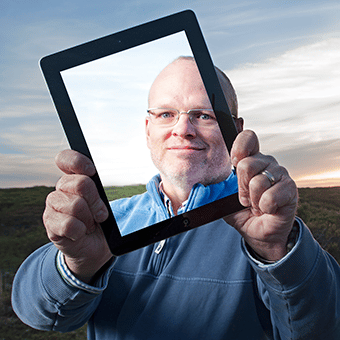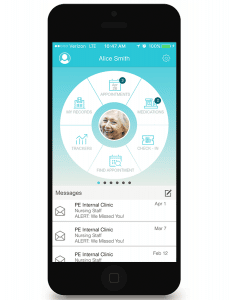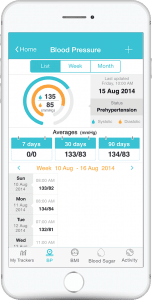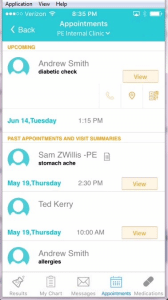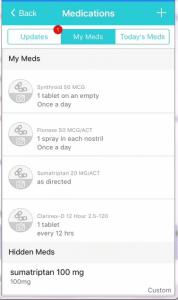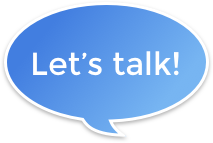eCW’s Adam Siladi: “ So you give them some marketing materials. Is that what you’ve got here?”
On this episode…
eCW’s Tony Polito: “So, it comes in this flashy, nice little box, kind of like an iPad box, very nicely put together…”
We do a little…unpacking.
Polito: “…and inside this box you have a series of things…”
Not a box, but a concept.
Polito: “…you have two-and-a-half inch buttons that your staff can wear, that resembles healow.com…
One that could mean the difference between success and failure, but that can also cause some pretty strong reactions.
Polito: “In addition to that, you have three large posters, that are approximately two-and-a-half by three feet that advertises healow, one, healow.com, the healow app, and then a poster that combines both of them, so that healow is being penetrated throughout the office, no matter what room they’re in…”
Marketing.
[Intro music, etc.]
Welcome to this third installment of the eClinicalWorks Healow Talks podcast, I’m Adam Siladi, and today we wrap up our exploration of patient relationship management. As a medical professional, you may think that the word “marketing” doesn’t apply to your job, or if it does, you are on the receiving side, and it usually asks what your staff wants for lunch.
Marketers hand out pamphlets and buttons and pens and say that they know the best way to solve your problems. And, for that reason, marketing can have some negative connotations because one of its stated objectives is to change behavior, and that can seem manipulative, in a way. But if you think about it, a lot of what healthcare focuses on today is behavior change: You should get more exercise, you should eat less sodium, you should quit smoking. You may even give the patient a pamphlet with information with statistics and some suggestions on how to do better.
And is there anything wrong with that?
Many people feel more comfortable with the term “education.” It has a feeling of benevolence and the impression that it comes without an agenda. But I think that lack of agenda is one of the limitations of pure education. Education is impartial. It doesn’t take into account who you are or what you need, and it doesn’t suggest where you should go next. On the other hand, while marketing educates, it also contains a message that is important to the sender, tailored to the receiver, and that offers a clear suggestion on what to do. And while I usually don’t require this kind of intervention at the doctor’s office, I always seem to get it in the dentist’s chair!
But the main point is that, unless you want to be content being the only one who is the change that you want to see in the world, then you need to tell people what you think. If you listen to just about any of our eClinicalWorks Podcast episodes about patient engagement, the way those offices have made change is through an organized effort to communicate a better way to those that need to hear it. But even when all the signs might point to a successful marketing campaign, those offices might deny it, as I found out in my conversation with Shari Crooker from Gwinnett Center Medical Associates.
eCW: “How did using healow transform your practice?”
Shari: “It’s streamlined our appointment process, that’s for sure. We don’t have that huge influx of calls on Monday morning. When we started with Patient Portal we were getting over 500 phone calls a day. We’re down to about 100 calls a day. It probably took about a year for the phone calls to really start dropping, and people, all of our patients, to get used to Patient Portal. But even with healow, the phone calls drop even more. Patients don’t need to call for their refill, they don’t need to call for an appointment. , they don’t need to call and ask a nurse about their labs, they simply send a message.”
eCW: “How did you manage that change? Did you have to market yourself to these patients in terms of these updates?”
Shari: “I wouldn’t call it marketing. I put out an email blast, or I started putting fliers — I would type up my little Word documents on my computer, explaining briefly how to use it, what it does, and any time any updates come along for healow.”
Maybe Shari didn’t think they were marketing because what she was doing seemed so simple. But marketing doesn’t have to be complicated to be effective, which is perhaps where many offices become intimidated. At the heart of marketing is a message. It can be any message. It can be a message for your patients that you are now open later on Thursdays to make it easier to get an appointment, or it can be a message for your staff that the new workflow is important for you to participate in a national quality program or meet Shared Savings goals.
In some ways, the emphasis on collaborative care encouraged by Patient-Centered Medical Home models is going to present a lot more occasions for marketing in the medical setting. Instead of prescribing a solution, providers may find themselves presenting several options for treatment to a patient, weighing those options with them, and ultimately letting the patient decide on the best course of action.
Success depends on more than just the message. If you want people to get the message, you have to figure out how you are going to deliver that message.
Shari: “The biggest obstacle I think I had at the beginning was telling providers not to use the word email. So, trying just to get that nomenclature out there, don’t say email. Portal. Use your Patient Portal. Set up your Patient Portal. Send me a Portal message, was huge. It was getting them to change their whole thinking about, let’s not use the phone anymore. Let’s make it more streamlined. And they took to it really well.”
And after this episode, look up season 3, episode 2 of the eClinicalWorks Podcast. In it, fellow caster Brian Saal talks with Carson City Medical Group, and they have some fantastic examples of how they effectively use marketing to educate their patients.
But in the meantime, I should introduce someone, or, you know what, he can introduce himself…
Tony Polito: Hi there, my name is Tony Polito, I work with the healow team here at eClinicalWorks…”
Tony is part of a team at eClinicalWorks that helps offices incorporate the patient portal and healow into their day to day routine. And, as of this recording, even helps get them going with a no-obligation trial of healow.
eCW’s Adam Saladi: “So you give them some marketing materials, is that what you’ve got there?
Polito: “That is correct, it comes in this flashy nice little box, like an iPad box, very nicely put together, and inside this box you have a series of things: You have two-and-a-half inch buttons your staff can wear that resembles healow.com and the website, healow.com; so that’s one thing; the other thing is that you have a series of pamphlets that are about six inches by two-and-a-half inches, advertising healow.com; we also provide you with a marketing stand so these pamphlets can fit into this pocket that we help you put together, in addition to that, you have three large posters that are approximately two-and-a-half fee by three feet that advertises healow, one, healow.com, the healow app, and then a poster that combines both of them. So you have a series of posters that you can actually put up in your triage, your offices, waiting room, things of that nature, so healow is being penetrated throughout the office, no matter what room they’re in.”
“When I go on site, in addition to training them, I help them place the marketing material in strategic areas of the office; not only that, you can put the pin on your shirt, it can be on a book, it can be stuck up in the office on a bulletin board, just advertising it and letting people know it’s existing is half the battle. Most people don’t know that healow is available to them, if they knew it, they would certainly use it, because everyone is looking for an appointment tomorrow, and someone’s cancelling an appointment, how would you know that?”
Tony also points out that marketing materials alone are not going to get you there. There’s one more piece to this puzzle that makes it all work together.
Polito: “healow is not a difficult product to learn and to adapt to. If you can book a ticket online, you can book an appointment. It’s that easy. So we help them through that process. So the training is essential for the staff, and then we find a trooper inside, a super user. Some people call it a super user. I call it a trooper. Find somebody who believes in the product internally. And sometimes it is a staff member, sometimes it is an office manager, or the husband of the provider, or the wife of the provider, or the provider himself or herself. If you get that trooper in the office, they will spread it.”
Another important point is that effectively marketing your efforts is not a one-time event. People need to see and hear your message on a regular basis, for as long as that message is relevant. This means that your message may need to be given by your front office staff at check-in, by your nurses and MAs during rooming, by your doctors during a visit, posted on walls, uploaded to your website, recorded on your phone messages, anywhere you can think of.
Shari’s Crooker’s office is one of those groups that have been very successful with their marketing efforts, but even she didn’t do it alone.
Adam Siladi: “The healow Team has put together this packet of marketing materials or communication materials. They have decals and posters and things like that. Did you get one of those in mail?”
Shari: “I have one above my computer screen, but I have the little decals everywhere, and I have the big posters stuck on every door. Again, that door that you pull patients through in the waiting room. It’s stuck right there, because they are staring at that door thinking they’re going to be the next one.”
Adam: “Is it easier, or would you prefer to have your own materials?”
Shari: “I think it was way easier. Are you kidding? I couldn’t come up with this stuff. And it also puts it out there where the patients know that it’s not just a fly-by thing. They know we’re serious about it, and that it is a true and real app, and part of our practice.”
Shari also points out that a doctor’s office can offer some pretty unique and effective ways to present marketing to your patients…
Shari: “So I have the big poster there, I have it in front of our scales, inside every room. It’s in the bathrooms. You know, pee in the cup, read about healow!”
Talk about a captive audience.
eClinicalWorks wants to help get your message across by providing pamphlets, buttons, posters, and stickers to make sure your patients know about the Patient Portal, healow.com, and the healow app. Especially the healow app, because the healow app is a free download that gives your patients easy access to your patient portal from their smartphone.
Now this is an important point for more reasons than one. As Dr Hinson noted in our first episode, one of the most overlooked reasons that patient engagement fails to catch on in an office is that the patient doesn’t access their portal on a regular basis. The healow smartphone app changes that by putting the portal at the patient’s fingertips, literally. Not only that, but logging in is much easier for the patient because their account can be linked through the app. Now I did mention that there was more than one reason to take the healow app seriously, so consider this:
Two-thirds of Americans now own a smartphone, according to a Pew Research Center report published in April of 2015. Sixty-two percent of smartphone owners have used their device to get info about a health condition. And that was the top cited use for a smartphone, beating out online banking by 5 percentage points. Facebook usage wasn’t on the list, though…
But that’s my point! A lot of us look at smartphones as a privilege. A little icing on the cake of connectivity. But there is a not so small population that rely on their smartphones as their only access to the internet. The Pew Research Center reported that 7% of respondents were completely smartphone-dependent for their access to the internet, and nearly 25% had restrictions on internet access outside of those devices. So think about that, Patient-Centered Medical Home hopefuls, the next time you are asked to run a report to evaluate potentially vulnerable populations. The fact that healow gives patients access to your patient portal might seem like fluffy buttercream to you, but to someone who is actually smartphone-dependent, that could be the bread and butter of their relationship with your office. You might not even realize, but the right marketing could make all the difference for your patients.
Full disclosure: In case you didn’t realize, I’ve been marketing to you this whole time! But I hope you also come away from this feeling better educated about the things that have made others successful. And just as you care about giving your patients information that helps them achieve success in their health, eClinicalWorks cares about helping its clients build stronger patient relationships. We know that the increasing number of options and requirements can make it difficult to know what to focus on next, so we want to make you aware of our message regarding ways we can help. That’s why the eClinicalWorks Podcast offers interviews with clients that have been there and done that, so you can make an informed decision about what to do next. And if you’re out there listening to this, please, tell us what you think, even if you hated it! I will be honest — we need your help. Share this series with your friends, colleagues, and clients and have them listen in, as well.
If you would like more information about any of the topics discussed in our series, check out all the information and tutorial videos available on my.eclinicalworks.com, or contact your Strategic Account Manager and mention our program.
Before we go, a few thanks are in order: Thank you to Shari Crooker, Dr. Gavini, Dr. Hinson, and Tony Polito, who lended their voices to this project. Thanks, of course, to our audio producer who takes care of the technical side of things, the eClinicalWorks Podcast team, and everyone else at eClinicalWorks who makes this program possible.
For the eClinicalWorks Podcast, I’m Adam Siladi, thank you for listening.
